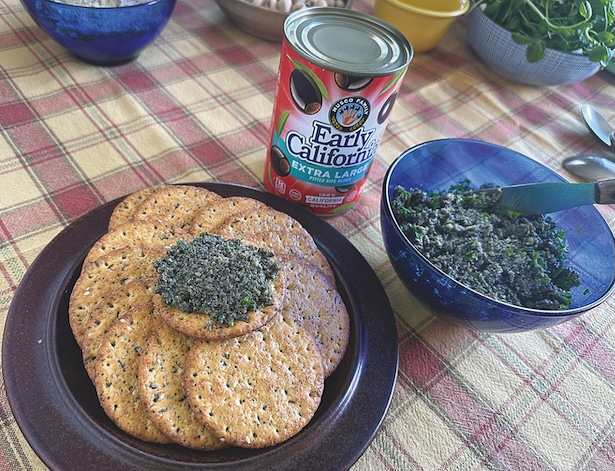
My first run-in with the olive came from my mom’s tamale pie.
It was the only time we ate them, and the metallic flavor and soft texture never seemed objectionable. It was a popular ’50s casserole thought to have come out of Texas. Although named after a very Mexican dish, it more closely resembled the common one-dish casserole mixtures from that time of hamburger, onion, tomato, and cheese.
Sloppy Joes and Hamburger Helper came from the same concept. In the case of tamale pie, black olives were added under a cornmeal crust. There is an online recipe from 1943 from Prudence Penny of the cookbook “Coupon Cookery.”
Olives, the trees from which they come and humans have shared a long history. The first wild trees are thought to have originated 20-40 million years ago. Evidence shows that humans used the oil from olives about 100,000 years ago in north Africa. The first evidence that the tree was farmed goes back around 8,000 years. At that time most of the oil was used for lamp oil; a more flavorful oil was yet to be developed.
Trade in olive oil expanded first in the Mediterranean and then later around the world; Japan successfully introduced olive trees in 1908. 80% of olives are harvested into oil, and 20% into table olives; but the wood from the trees is very hard and durable with a pale color and beautiful patterns in their grain. Table olives, black and green, are cured or fermented.
They were brought to California by Spanish missionaries between 1769-1705, and are common parts of mission gardens. Black olives from Lindsay, Calif., are sold in bright red cans and used in salads, on pizzas and in tapenade. The Santa Cruz Bagelry serves them on bagels with cream cheese and green onions or walnuts.
Like olives themselves, tapenade is an ancient mixture of olives, capers and olive oil. The name comes from the French Provençal word for capers, tapenas. There are many versions of this dish. This one, by Andrea from the website Life Made Simple, is dense and goes well on crackers. Some versions have more olive oil and less olives and capers. It is better soaked up on bread.
1 cup pitted black olives
1 tablespoon capers
3/4 teaspoon garlic, minced
2 tablespoons chopped fresh parsley, plus 1 tablespoon for garnish
1 teaspoon fresh lemon juice
2 tablespoon good olive oil
1/8 tsp salt
1/8 teaspoon black pepper
Combine all ingredients in a food processor and pulse until a coarse paste is formed. Taste and adjust flavors. Serve with crusty bread, crackers or pita chips.










